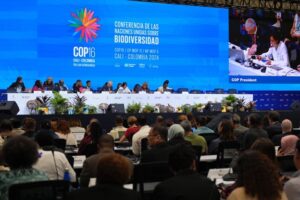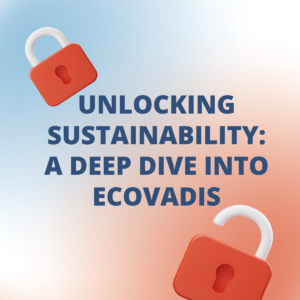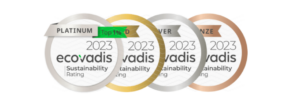 Responsible Sourcing in essence is using your purchasing power to influence positive behaviour and change regarding the environment and human rights down your supply chain. Best practice is evolving quickly with the introduction of new legislation, customer requirements and expectations and financial institution interest.
Responsible Sourcing in essence is using your purchasing power to influence positive behaviour and change regarding the environment and human rights down your supply chain. Best practice is evolving quickly with the introduction of new legislation, customer requirements and expectations and financial institution interest.
Responsible sourcing means adopting sustainable procurement practices and actively engaging with your supply chain. It helps ensure compliance, reduce risks, lower environmental and social impact, enhance brand trust, attract talent, and set your business apart. Below is an overview of key legislation relevant to supply chains and responsible sourcing.
Corporate Sustainability Reporting Directive
Overview: The Corporate Sustainability Reporting Directive (“CSRD”) is an EU directive that enhances corporate transparency regarding sustainability. It requires companies to report on environmental, social, and governance (ESG) matters in greater detail than before. The directive builds on the existing Non-Financial Reporting Directive (NFRD) and significantly expands its scope.
Timeline*: The CSRD officially entered into force on 1 January 2024. Its implementation is phased. The first wave of reports are due in 2025, covering the 2024 Financial Year.
*Amendments were proposed on 26th February 2025, as part of an ‘Omnibus package’, and are currently being negotiated in the European Parliament.
Scope – Who does it apply to? The CSRD applies progressively in stages to different categories of businesses meeting EU-set thresholds and criteria. Initially, it applies to large EU companies of public interest with 500+ employees, and either €50 million in revenue or over €25 million in total assets. Over time, the CSRD will extend to large companies, SMEs and non-EU companies with substantial business operations within the EU.
Consequences of non-compliance: Each EU Member State determines its own sanctions for non-compliance. In Ireland, penalties for non-compliance are aligned with financial reporting non-compliance and may include fines and restrictions/disqualification of directors.
Corporate Sustainability Due Diligence Directive
Overview: The Corporate Sustainability Due Diligence Directive (“CSDDD”) establishes mandatory due diligence requirements for companies to address human rights and environmental risks in their supply chains. The directive aims to prevent adverse impacts on workers, communities, and the environment by ensuring responsible business conduct.
Timeline*: The CSDDD was adopted on 24 April 2024, with phased implementation from 2027 onwards. The first companies in-scope from 2027 include those based in the EU with more than 5,000 employees worldwide and a global turnover exceeding €1.5 billion. Non-EU companies that generate over €1.5 billion in the EU are also included.
Scope: CSDDD applies to both EU and non-EU companies operating in the EU that meet certain size and revenue thresholds. It focuses on high-risk sectors, including agriculture, mining, and textiles, requiring companies to integrate due diligence into their policies, monitor their supply chains and report on their findings.
Consequences of non-compliance: Failure to comply with the CSDDD can lead to penalties including fines of at least 5% of global turnover and potential civil liability, holding companies accountable for damages caused by non-compliance.
*Amendments were proposed on 26th February 2025, as part of an ‘Omnibus package’, and are currently being negotiated in the European Parliament
EU Forced Labour Prevention Regulation
Overview: The Forced Labour Regulation (“FLP”) seeks to eliminate products made with forced labour from the European market. By requiring EU Member States to establish control systems and monitoring authorities to enforce compliance, the directive compels companies to eliminate forced labour from their own operations and supply chains.
Timeline: The Regulation was adopted on 23 April 2024 and will come into effect on 14 December 2027.
Scope: The Regulation applies to all companies selling goods in the EU, regardless of their origin. It covers the entire supply chain, from raw materials to finished products, and requires companies to conduct thorough risk assessments and demonstrate compliance with the Regulation.
Consequences of non-compliance: Failure to comply with the Regulation may lead to fines, import, supply and export bans for products manufactured using forced labour and/or an order to dispose of the products.
EU Deforestation Regulation
Overview: The EU Deforestation Regulation will require large companies trading in seven forest-risk commodities to prove that these goods/products do not originate from recently deforested areas or contribute to forest degradation. Companies placing these commodities on the EU market will be required to meet three requirements, providing that deforestation did not take place during production. These include:
- Reporting the geolocation coordinates of where the commodities were sourced in order to prove they have not been produced as a result of deforestation
- Submitting a due diligence declaration to the EU confirming that due diligence has been conducted.
- Ensuring that the products have been produced in accordance with the relevant legislation of the countries of production (e.g on human rights)
Timelines: The EUDR will apply for large companies from 30 June 2025.
Scope: Companies in scope of the EUDR include those who place forest-risk commodities (and their derivative products, as listed in Annex I of the Regulation) on the EU Market, and companies exporting these products. The commodities are cattle, cocoa, coffee, soy, palm oil, wood, and rubber.
Consequences of non-Compliance: Failure to comply with the requirements of the EUDR will result in fines up to 9% of the turnover of the company in question.
Carbon Border Adjustment Mechanism
Overview: The Carbon Border Adjustment Mechanism (CBAM) requires the reporting of Green House Gas Emissions factors for goods imported into the EU that are carbon intensive. Companies importing over 50 tonnes per year of CBAM goods will be required to report against CBAM requirements. These goods are iron and steel, aluminium, cement, fertilisers, electricity and hydrogen. Companies are required to become authorised CBAM importers, submit CBAM declarations, and purchase CBAM certificates in order to operate on the EU Market.
Timelines: CBAM is currently in a transitional phase and will apply fully from 2026. The obligation to purchase CBAM certificates will apply from February 2027.
Scope: Companies importing over 50 tonnes of iron and steel, aluminium, cement, fertilisers, electricity and hydrogen per year fall in scope of CBAM.
Consequences of non-Compliance: Penalties arising from minor errors can induce reduced penalties. However, fines for deliberate non-compliance with CBAM requirements or failing to report range from €10 to €50 per non-reported tonne of embedded emissions.
*Note: Amendments to CBAM were proposed on 26th February 2025, as part of an ‘Omnibus package’, and are currently being negotiated in the European Parliament and Council.
Eco-design for Sustainable Products Regulation
Overview: The Eco-design for Sustainable Products Regulation (ESPR) is the new EU level Eco-design framework, replacing the old Eco-design Directive (2009) that focused on energy-related products. The new framework introduces measures to make products more sustainable by design and requires information to help extend their lifespans. This Regulation expands eco-design rules to nearly all products in the EU, covering all aspects of circularity—durability, reparability, refurbishment, recycled content, and consumer information. One key tool is the Digital Product Passport, a virtual ID storing data on a product’s performance, materials, repairability, recyclability, and environmental impact.
Timelines: The ESPR entered into force in July 2024. However, the European Commission will adopt product-specific requirements (including the DPP) on a case-by-case basis for each product category. It plans to publish its working plan in the first half of 2025.
Scope: Companies placing consumer products on the EU Market, provided the products fall into scope of the ESPR and its product-specific delegated acts.
Consequences of non-Compliance: If products are found to be non-compliant, they will be prohibited from being placed on the EU Market.
How Goodbody Clearstream’s Responsible Sourcing Team can Support Your Business
Integrating ESG into procurement is now essential for long-term success. A Responsible Sourcing Strategy helps businesses stay sustainable, manage risks, meet stakeholder expectations, and reduce Scope 3 emissions. By prioritising ethical labour practices, reducing environmental impact, and fostering transparent supply chains, companies can enhance brand reputation, comply with evolving regulations, and attract socially conscious investors and consumers. Additionally, responsible sourcing helps mitigate disruptions caused by environmental or social crises, ensuring supply chain resilience. In today’s competitive and increasingly regulated global market.
What can we assist with?
- Developing Company Policies
GBCS can help you to create or refine a responsible sourcing policy and supplier code of conduct. A responsible sourcing policy should define what sustainable sourcing means for your company.. A supplier code of conduct sets clear standards for labour rights, environmental impact, and social responsibility. Our team can assist in aligning your policy with recognised sustainability standards and certifications such as the CSRD MDR-P standard, the United Nations Global Compact 10 principles, or others relevant to your industry, ensuring compliance with environmental and social sustainability requirements.
- Supply Chain Assessments
Mapping your existing supply chain is essential for identifying suppliers and tracking the origin of your materials and services. Goodbody Clearstream can assist with this supply chain mapping and risk assessment process, helping you to gain visibility of potential risks and opportunities.
- Training & Engaging with Your Suppliers
Work closely with your suppliers to encourage and facilitate the adoption of sustainable practices through workshops and training programs. Our team can help design a customised, streamlined process that allows you to gather essential data while supporting your suppliers in their sustainability efforts. As an Enterprise Ireland approved sustainability training provider, GBCS are leaders in this area and can assist with this process.
- Conduct Due Diligence Throughout Your Supply Chain
A robust due diligence process is key to identifying social, environmental, and ethical risks in current and potential suppliers.GBCS can assist in conducting risk assessments, evaluating supplier compliance, and integrating due diligence frameworks into your procurement strategy to mitigate potential sustainability risks
- Monitoring, Auditing and Reporting on Supply Chain Data
Establishing systems to monitor suppliers’ sustainability performance is key to ensuring ongoing compliance with your responsible sourcing policy. Our team can help implement data tracking, conduct audits, and generate sustainability reports.
If you wish to discuss your responsible sourcing journey please contact Kate at kate@goodbodyclearstream.ie

 As climate change intensifies, businesses, governments, and financial institutions face growing pressure to adopt strong climate transition plans. These strategies are key to building a low-carbon, sustainable future and meeting global goals like the Paris Agreement.
As climate change intensifies, businesses, governments, and financial institutions face growing pressure to adopt strong climate transition plans. These strategies are key to building a low-carbon, sustainable future and meeting global goals like the Paris Agreement.
 At COP16, 23,000 people representing 196 countries, over 100 ministers, over 3000 business delegates, civil society, Indigenous people and local communities, youth among others, gathered in Cali, Colombia, for the 16th Conference of the Parties to the Convention on Biological Diversity (CBD COP16). Held over 2 weeks as the first biodiversity COP since the adoption of the Kunming-Montreal Global Biodiversity Framework (KMGBF) two years ago, COP16 marked a significant milestone in global biodiversity conservation efforts to accelerate the implementation of the KMGBF and its 23 targets.
At COP16, 23,000 people representing 196 countries, over 100 ministers, over 3000 business delegates, civil society, Indigenous people and local communities, youth among others, gathered in Cali, Colombia, for the 16th Conference of the Parties to the Convention on Biological Diversity (CBD COP16). Held over 2 weeks as the first biodiversity COP since the adoption of the Kunming-Montreal Global Biodiversity Framework (KMGBF) two years ago, COP16 marked a significant milestone in global biodiversity conservation efforts to accelerate the implementation of the KMGBF and its 23 targets.
 Goodbody Clearstream are delighted to share that Fran McNulty, Director Responsible Business is now a trained B Leader on the Irish B Leaders Database and can guide companies who are interested in B Corp certification.
Goodbody Clearstream are delighted to share that Fran McNulty, Director Responsible Business is now a trained B Leader on the Irish B Leaders Database and can guide companies who are interested in B Corp certification. What is EcoVadis?
What is EcoVadis?